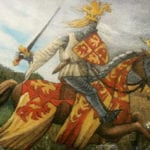 Weird Stuff
Weird Stuff  Weird Stuff
Weird Stuff  Mysteries
Mysteries 10 Tragic Disappearances and Deaths in Joshua Tree National Park
 History
History 10 Ways Childhood Really Sucked in the Old West
 Music
Music 10 Name Origins of Famous Bands from the 1990s
 Religion
Religion 10 Biggest Turnarounds by the Catholic Church
 Weird Stuff
Weird Stuff 10 Unbelievable Times Laws Had Unintended Consequences
 Humans
Humans Ten Historic Women Who Deserve Way More Credit Than They Got
 Movies and TV
Movies and TV 10 Films That Spawned Major Lawsuits
 History
History Ten Times Towns Were Wiped Off the Face of the Earth
 Creepy
Creepy 10 of the Most Disturbingly Haunted Public Houses in the UK
 Weird Stuff
Weird Stuff 10 Niche Subcultures That Are More Popular Than You Might Think
 Mysteries
Mysteries 10 Tragic Disappearances and Deaths in Joshua Tree National Park
 History
History 10 Ways Childhood Really Sucked in the Old West
Who's Behind Listverse?

Jamie Frater
Head Editor
Jamie founded Listverse due to an insatiable desire to share fascinating, obscure, and bizarre facts. He has been a guest speaker on numerous national radio and television stations and is a five time published author.
More About Us Music
Music 10 Name Origins of Famous Bands from the 1990s
 Religion
Religion 10 Biggest Turnarounds by the Catholic Church
 Weird Stuff
Weird Stuff 10 Unbelievable Times Laws Had Unintended Consequences
 Humans
Humans Ten Historic Women Who Deserve Way More Credit Than They Got
 Movies and TV
Movies and TV 10 Films That Spawned Major Lawsuits
 History
History Ten Times Towns Were Wiped Off the Face of the Earth
 Creepy
Creepy 10 of the Most Disturbingly Haunted Public Houses in the UK
10 Lasting Historical Mysteries From Around The World
Some mysteries have been baffling the world for a couple of years, while others have been around for centuries. Regardless of how long they’ve been around, scientists and other experts aren’t giving up on solving the biggest mysteries of our time and those that came before us, especially ones that are a mixture of legend and actual history.
On this list are just a few examples of dated mysteries that continue to intrigue those trying to solve them. Some are very tangible and accessible things that experts can examine all they like. Others are missing in action and are still searched for to this day.
10 Lost City Of The Kalahari

In November 1885, Guillermo Farini (aka William Leonard Hunt) wrote a report about a strange and mysterious city he had come across in the Kalahari Desert. He presented these findings to the Berlin Geographical Society and again in 1886 to the Royal Geographical Society of Great Britain. He even published a book that same year in which he described the discovery in detail.[1] In the book, he described mysterious rock formations which he was convinced were ruins of the ancient city. He claimed the city was built in the form of an arc, with some parts hidden under the sand and other parts visible. He couldn’t find any inscriptions and guessed that the city would be thousands of years old.
Over the years, these findings turned into rumors about an ancient city right in the center of the Kalahari, which is now covered completely by desert sands. Apparently, even the Khoi Khoi in the area have stated that there used to be an ancient city which was not built by them. Historian Gustav Prelude also claimed that the Khoi Khoi were willing to lead him to the ruins in the north of the area and to a place even further where precious stones had once been discovered.
More searches have been undertaken to find the ruins of the city and to try and prove Farini’s story to be correct. However, the mystery has now become somewhat of a myth, with some people claiming to have seen quarries or even shipwrecks in the middle of the desert. Also, nothing came of these searches. Professor A.J. Clement tested Farini’s theory and concluded that he never actually reached the Kalahari Desert but went another route instead, where he found natural rock formations composed of dolerite which, when eroded, can look man-made.
Then, in 2016, another expedition was undertaken to the Kalahari (broadcast on the Travel Channel), and walls and rocks were found that matched the original description by Farini. However, it still remains unclear whether these structures were man-made.
9 Helix Staircase Of Loretto Chapel
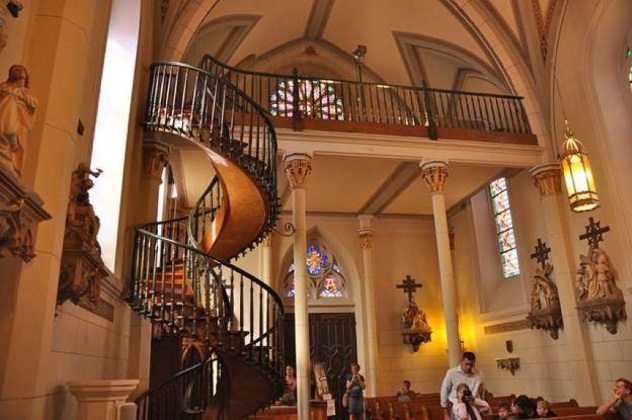
In the late 1870s, the architect of the Loretto Chapel in Santa Fe, New Mexico, died unexpectedly during construction and only after much of the church had been completed. Then the builders realized that no staircase had been planned for the choir loft. A standard staircase would not have sufficed, considering the small size of the chapel, and carpenters were at a loss as to how to create a staircase in such a small space.[2]
The nuns at the church prayed to St. Joseph for nine days straight. The day after their marathon prayer session, a strange-looking man appeared at the door of the chapel. He told the sisters he was able to build them a staircase that would fit into the chapel, but they would have to give him complete privacy during the time it took to complete the task. Therefore, he worked alone in the chapel for three months, with only the basic tools he carried with him: a saw, a square, warm water, and also wood.
When the staircase was completed, the man disappeared without ever giving his name to anyone. The staircase itself rose to 6.7 meters (22 ft) in height, spiraling around twice before reaching the choir loft. However, there were no nails or center support for this to even be possible. The shape of the helix should not have been able to bear the weight of people using the stairs, considering there was no middle column. Ten years after this strange incident, a railing was added to the staircase. In later years, the wood was tested by the manager of the chapel, and it was found to be an unknown variety of spruce not found in the area.
The nuns at the time attributed the staircase as being the work of St. Joseph himself and insisted on referring to it as a miracle. Who the man was and how he was able to built the staircase so perfectly with basic tools remains a mystery. Is it just a legend that endured through the years, or is there something more to the story? We’ll probably never know.
8 Pomorie Tomb
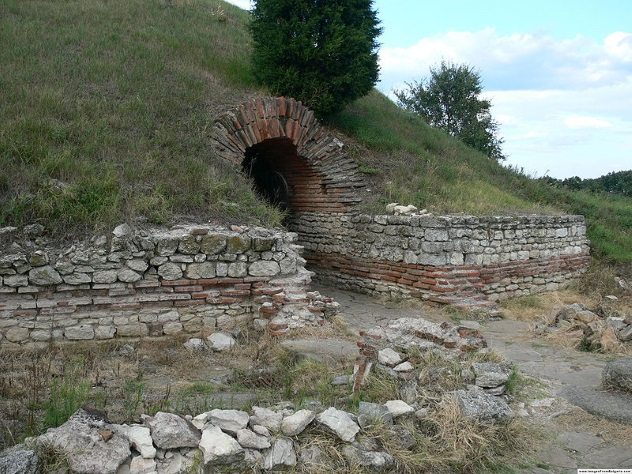
Near the town of Pomorie in Bulgaria, among vineyards and orchards sits a man-made mystery. Named the Pomorie tomb or Dome Tomb, the structure is a semi-cylindrical vault with an empty column in the middle that is bigger at its top where it comes together with the external wall. The tomb is estimated to have been built between the second and fourth centuries AD.[3] There were also traces of what used to be a spiral staircase inside the column when it was first discovered. The place was reconstructed in the late 1950s.
Experts have been unable to establish a specific name for the structure or how it was so accurately built during that time. When research into the tomb began at the end of the 19th century, Czech brothers and archaeologists Karel and Hermann Skorpil made several drawings and notes about the structure. They assumed it was a tomb, as do most historians today. However, some researchers believe that it is actually a mausoleum built as a monument for a hero of those times. Research is ongoing to establish just what the purpose of this ancient structure was and who exactly built it. (Some believe it was built by a wealthy Thracian family.)
7 Traub Motorcycle
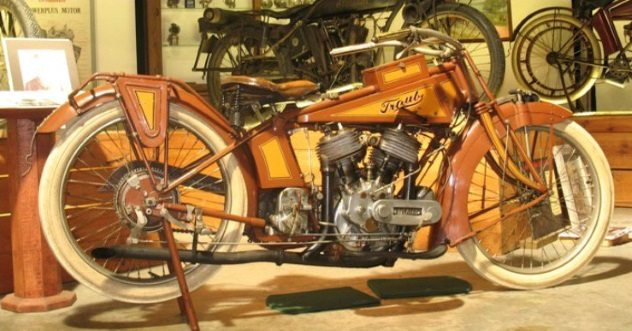
Renovations of an apartment building in Chicago in 1968 yielded a little more than the plumber carrying out the work was expecting. But then, while tearing down one of the brick walls, he was amazed to find an old motorcycle with the word “Traub” written on it behind the rubble.
He immediately set out to find the first owners of the building. They claimed that their son had stolen the motorcycle from its original owner before leaving to fight in World War I. They also said their son was the one who hid the motorcycle in the wall, but he was killed during the war, and therefore, the motorcycle remained hidden until the plumber discovered it.[4]
The bike was sold to several different people after its discovery, eventually landing up at the Wheels Through Time Museum. Founder Dale Walksler uses the bike to this day, amazed that it still runs perfectly. Experts say that the complex engineering of the Traub motorcycle surpasses all of the classic motorcycles that came after it, and its parts have not been seen on any other motorcycles. Its engine is one of a kind, as is its brake system.
However, the biggest mystery seems to be the creator of the Traub. While most historians believe it to have been Gottlieb Richard Traub, they don’t believe there is solid evidence to fully support this claim. This is in spite of a letter that Traub wrote to Motorcycle Illustrated in 1907, in which he claimed to have built a 4-horsepower motorcycle. He also owned a bike shop and used to live in Chicago, close to the apartment building where the Traub motorcycle was discovered in 1968.
6 San Bernardo Mummies
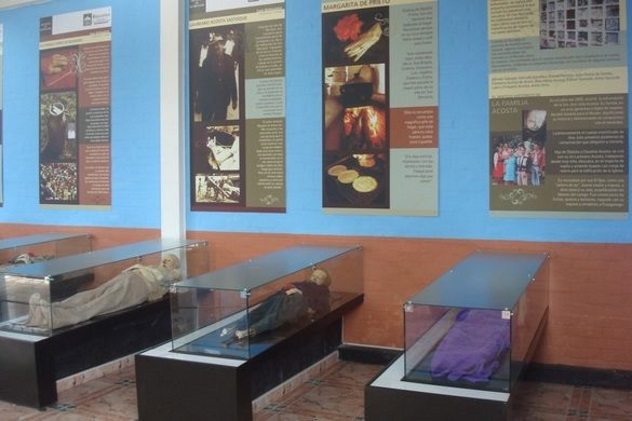
Surrounded by the Andes mountains, a town named San Bernardo in Colombia is known for a strange mystery of its own. Seemingly just like any other small town on the outside, there is a secret in its core that has yet to be fully explained by scientists.[5]
In 1957, a flood swept through the cemetery in the area, leading to grave workers having to move the remains to a new location. While searching through the remains, they were astounded to find that many of them were completely free of decay and decomposition, even though the bodies had been there a very long time.
One of the grave diggers, Eduardo Cifuentes, alerted the authorities, and subsequent examination of the bodies revealed that not only were they mummified in some natural, unexplained manner, but their clothes were also in very good condition. Other corpses in the cemetery were reduced to mere bones as was to be expected, but the mummies remained pristine, despite showing no evidence of having been embalmed.
Theories for the cause of this phenomenon range from the diet of the locals, which includes unique fruits called the guatila and the balu, to the weather and high altitude of the area. However, it doesn’t explain why the clothes of the corpses would also remain in good condition and why San Bernardo is the only town in the area where the mummies were found. Some of these bodies are now on display inside glass cases in a museum. The museum does not have any measures in place to preserve corpses, yet the San Bernardo mummies still refuse to yield to rot and decay.
5 Lost Tombs Of The Maccabees

Almost 150 years ago, a search was initiated for the lost tombs of the Maccabees. Those who took part included scholars, experts, travelers, and so on. However, nothing ever came of the search, and it continues to this day. In 2015, an archaeological discovery at the Horbat Ha-Gardi site near Modi’in was thought to be the tomb in question, but that turned out to be another dead end.
The family that piqued the interest of experts worldwide consisted of a Jewish priest named Mattathias and his five sons, who rebelled against the pagan rule of the Hellenistic Seleucids. When the priest died, his son Judah continued the campaign and eventually successfully freed Judea from the Seleucids and ensured the liberation of the temple. During the reinstatement or rededication of the temple, the festival of Hanukkah was born.[6]
After the temple was rededicated, the five sons of Mattathias continued to fight for more territory, each eventually dying one by one after taking over the throne. It is their lost tombs that are still the center of a fervent search by archaeologists today. For now, the location of these royal tombs remains a mystery.
4 1882 Winchester Rifle
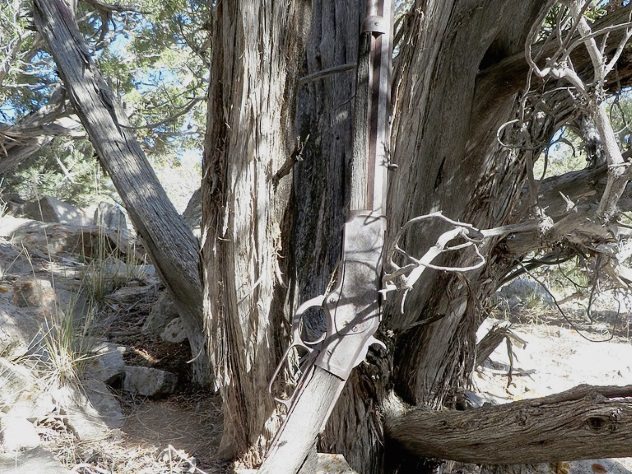
At the end of 2014, employees of the Great Basin National Park in Nevada were going about their daily tasks when they stumbled across a strange find. Up against a tree leaned a Winchester rifle. Just by looking at the rifle, the employees could tell that it wasn’t new, but they were amazed to find out later that it was more than 130 years old.[7]
It was established that the rifle was a Model 1873 and was manufactured in 1882. More than 700,000 of these guns were made between 1873 and 1919. All of this information, unfortunately, didn’t shed any light on who may have owned the gun or why and how it landed up in the park. Theories include that the rifle may have belonged to a cowboy or gold prospector who left it behind while searching for greener pastures. This would also mean that the rifle had been standing upright in the park for more than 130 years. However, most find this scenario implausible.
According to experts, another, more believable, theory would be that someone inherited the rifle and decided to leave it in the park for unknown reasons. The rifle is being held at the Cody Firearms Museum, but the aim is to eventually return it to the park for display purposes.
3 The Sibiu Manuscript
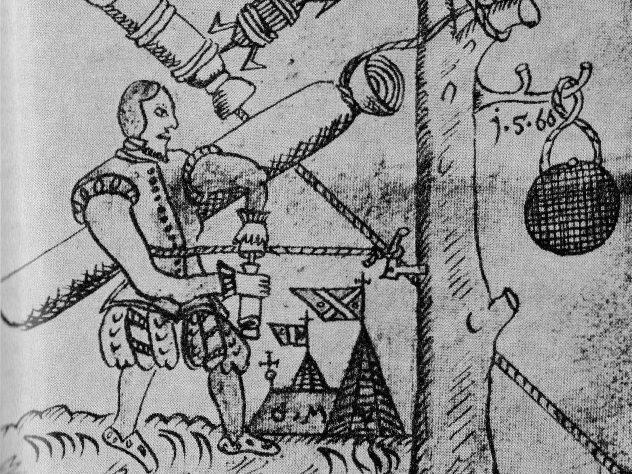
It took until 1961 for someone to discover a document named the Sibiu manuscript. The document contains 450 pages and dates back to the 1500s. The writing inside, however, is what has stumped experts. It includes technical specifications regarding artillery, ballistics, and multistage rockets.[8]
The manuscript also details the successful launching of a multitiered rocket in front of thousands of witnesses in the city of Sibiu in 1555. The author of the manuscript, Conrad Haas, included drawings of the rocket, which he designed and built. It is believed that the Sibiu manuscript is the first document detailing the science of rocket-building. Haas also detailed the idea of modern spacecraft, rocket fuel, liquid fuel, and delta wings.
How it came to be that someone figured out rocket science hundreds of years before astronauts in the Apollo, Gemini, and Mercury programs used the technology remains a mystery.
2 Genghis Khan’s Tomb
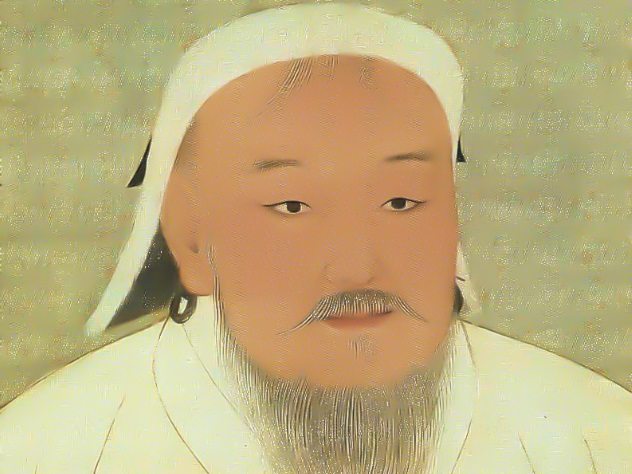
As soon as Genghis Khan drew his last breath in 1227 at the age of 65, several legends about his death were born. Some speculated that he died after falling from his horse or during battle against the Chinese. Others believed that he succumbed to pneumonia or, alternatively, lost too much blood after being castrated.[9]
Not only is Khan’s cause of death a mystery, but his final resting place has yet to be found. Khan’s request was to be buried in a secret location, and those who buried him made sure the secret would not be revealed by killing everyone who happened to see the funeral procession. Legend further obscures events by stating that a river was diverted over his grave to keep anyone from ever finding it. Another story has it that 1,000 horses were forced to run over the grave, after which trees were planted over it.
The search for Khan’s tomb continues, in spite of technical difficulties such as underdeveloped terrain and vast expanses of wilderness that would probably take years to explore.
1 The Red Queen
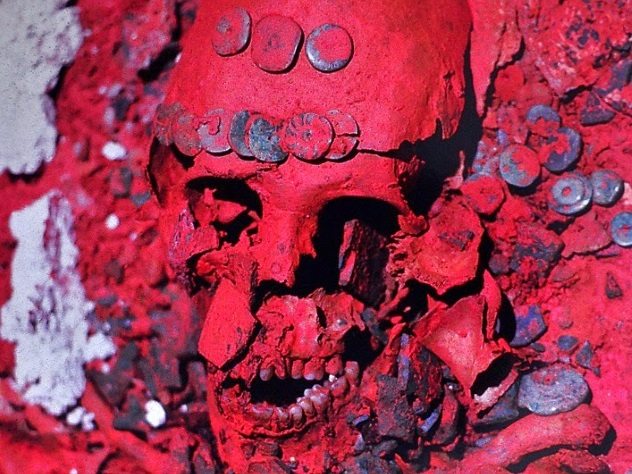
In 1994, archaeologist Arnoldo Gonzales Cruz and his team discovered a burial chamber in Temple XIII in the ruins of Palenque in Southern Mexico. Inside the chamber, they discovered a sarcophagus and an intact tomb. At one end of the sarcophagus, they found the skeleton of a young boy; at the other, they found the skeleton of a woman in her thirties. It is thought that they were sacrificed in order to accompany the woman whose remains were found inside the sarcophagus to the afterlife.[10]
The skeleton inside the sarcophagus was covered in red dust, leading to it being nicknamed the Red Queen. Alongside it, Cruz and his team found a collection of jade and pearl objects. A diadem of jade beads was found around the skull as well as remains of what had been a funeral mask. Unfortunately, none of the findings pointed to the identity of the woman. Studies conducted on the remains revealed that she had been around 60 when she died and that she loved eating meat. It is believed that she was an important person, considering that her burial chamber was located next to that of Pakal the Great. The remains have since been returned to Palenque, and the research into her identity continues.
Estelle lives in Gauteng, SA.
Read more intriguing unsolved mysteries on 10 Mysteries Unlikely To Ever Be Solved and 10 Unsolved Mysteries Surrounding Historical Tragedies.


